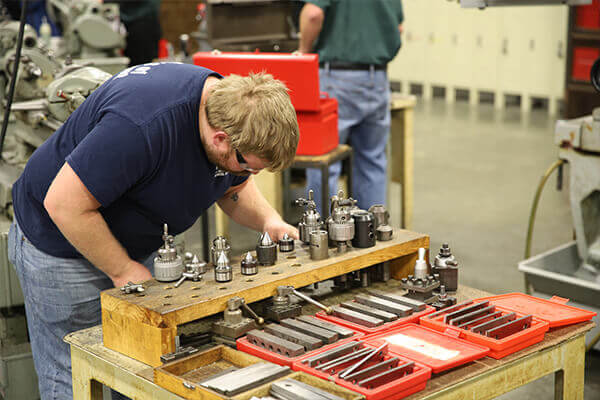A machinist is a trained professional who operates CNC (Computer Numerical Control) machines, such as milling machines and lathes, to cut and create precision parts for tools, devices, and instruments. They make a digital replica/sketch of the final product and then use software to program the CNC machine, producing an accurate part from the sketch /model. When operating the CNC machine, they must ensure the material is secured correctly, and the cutting tools are set well to avoid any mistakes. Once all the tools are developed, they initiate the cutting program and monitor the process to produce a high-quality part. Since technology keeps evolving, machinists keep learning new techniques and skills every day.

A machinist can work in different sectors, such as producing metals for machines at Kor-Pakindustrial manufacturers, automobiles, factories, and other industries. Most machinists focus on the sectors of inspections, production planning, and quality control. If you are interested in detailed work, accurate work, producing complicated parts, and problem-solving, machining work would be fun and rewarding. Here is how to become a machinist in 2020.
Understand the career duties of a machinist
There are different career duties of a machinist. You can become a production machinist, whereby you create thousands of pieces of one kind of machine part. You can also become a maintenance machinist and facilitate repairs and maintenance of existing CNC machines. The various duties of a machinist include cutting and producing precision parts, setting up and operating machinery and tools, replacing damaged cutting tools, monitoring the cooling and heating temperatures of machine parts, and monitoring machine performance, among other things.
Take the required courses.
To become a machinist, you need the required education courses and mechanical skills. It would help if you had a high school diploma, maths, computer skills, the ability to interpret blueprints, manual dexterity, attention to detail, accuracy, and problem-solving skills. Then, it would help if you had an apprenticeship and continual on-the-job training, which most manufacturers grant. A course on metalwork is also advantageous, and practical training is the key focus. Then, you need certification through a regulatory body in the industry.
Complete your apprenticeship
A machinist apprenticeship program can take four years, and you must complete that. You learn different aspects of machinery trade, such as CNC machine operation, CAD programming of CNC machines, geometric dimensions, math, physics, and safety practices. To become a professional machinist, continual on-the-job training is highly required.
Get your credentials
You can now obtain NIMS(National Institute of Metalworking Skills) certification when you complete your apprenticeship. There, you do both theory and practical-based examinations, after which you can become a certified machinist, such as a credentialed worker.
Grow your career
From there, you have to grow as a machinist. You can start as a CNC machine programmer in a manufacturing company as you advance to supervisory and managerial positions. You also require excellent communication skills to network with people in the industry. Now, focus on earning extensive knowledge and experience to handle complicated projects. Machinists’ demand is increasing, so you have a promising career if you want to pursue it.
THE FINAL WORDS
A machinist’s salary depends on the specialization and educational background. Depending on the projects you undertake, the wages can be incredibly high. Pursuing your career as a machinist is highly rewarding in the long run.


